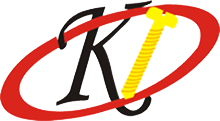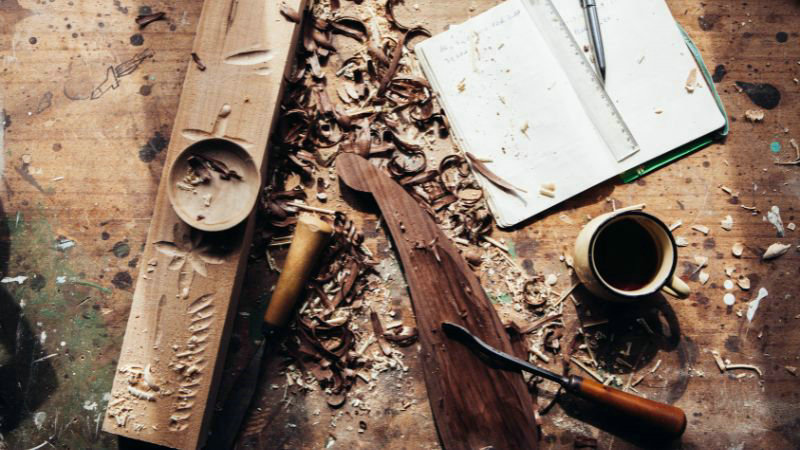
When you’re tackling a project, be it small home repairs or large-scale construction, nuts and bolts are essential fasteners that you’ll encounter. A bolt is a type of screw with an external male thread. It’s typically paired with a nut, which has a threaded hole matching the bolt’s thread. The fundamental purpose of these pairs is to hold materials together securely.
What are Bolts
Bolts are externally threaded fasteners designed to be inserted through holes in assembled parts, usually to be held in place with a mated nut. Bolts typically consist of two main components: bolt head and shank (threaded portion).
They are made from various materials like steel, stainless steel, brass, and nylon, depending on the required strength and corrosion resistance which are widely used in construction, machinery, vehicles and industrial equipment to provide a strong, secure and removable fastening.
Types of Bolts:
There are many different types of bolts commonly used for various applications.
- Anchor Bolts: These are used to attach objects to concrete. The bolt is fastened into a preset anchor which is installed in the concrete.
- Arbor Bolts: Designed for use with cutting wheels and other rotating parts, arbor bolts have a washer face under the head to provide a larger bearing surface.
- Carriage Bolts: These have a smooth rounded head with a square neck underneath that locks into material to prevent spinning during tightening. Often used in wood applications.
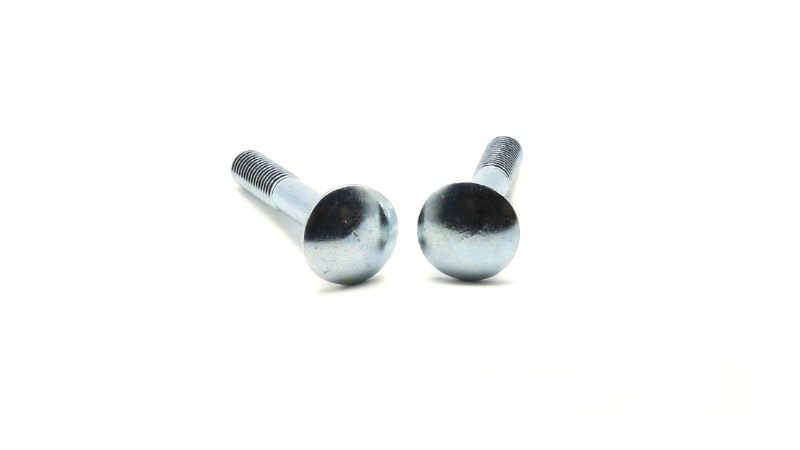
- Elevator Bolts: Similar to carriage bolts but with a thin, large head. Used in conveyor systems and agricultural applications.
- Flange Bolts: These bolts have a wide flange at the head which acts as an integrated washer, eliminating the need for a separate washer.
- Hanger Bolts: Also known as headless bolts, these are threaded on both ends, with machine thread on one end and lag thread on the other. Used for hanging objects.
- Hex Head Bolts: The most common type, hex bolts have a hexagonal head and are used in a wide variety of applications.

- Lag Bolts: These are basically oversized wood screws with hex heads. The thread is a wood thread rather than a machine thread.
- Penta Bolts: Penta head bolts are manufactured as machine bolts. These have a five-sided head that requires a special key to install or remove. Used in high security applications.
- Sex Bolts: Also known as barrel nuts or Chicago bolts, these are two-part fasteners with an internal thread and a barrel-shaped flange.
- Shoulder Bolts: These have an unthreaded shoulder between the head and thread. The shoulder acts as a shaft for rotating items.
- Square Head Bolts: Similar to hex bolts but with a square head. Less common than hex bolts.
- U Bolts: These are shaped like the letter U and have threads on both ends. Used to secure pipes and other round objects.
- Eye Bolts: An eye bolt is a type of fastener consisting of a threaded shaft with a loop or ring on one end. The eye allows for the attachment of cables, ropes, hooks, or other hardware.
- Cup Square Bolts: Used in woodworking to prevent the bolt from turning while tightening the nut
What are Nuts
A nut is a type of fastener with a threaded hole that is almost always used together with a mating bolt. The nut is kept together with the bolt by a combination of their threads’ friction, slight elastic deformation, a slight stretching of the bolt, and compression of the parts to be held together.
Types of Nuts
- Hex Nuts: Hex nuts are the most common shape and you’ll recognize them by their hexagonal form. They come in a variety of sizes and thread counts suited for general-purpose fastening. Their strength can vary depending on the material, but steel hex nuts are widely used for their robustness.
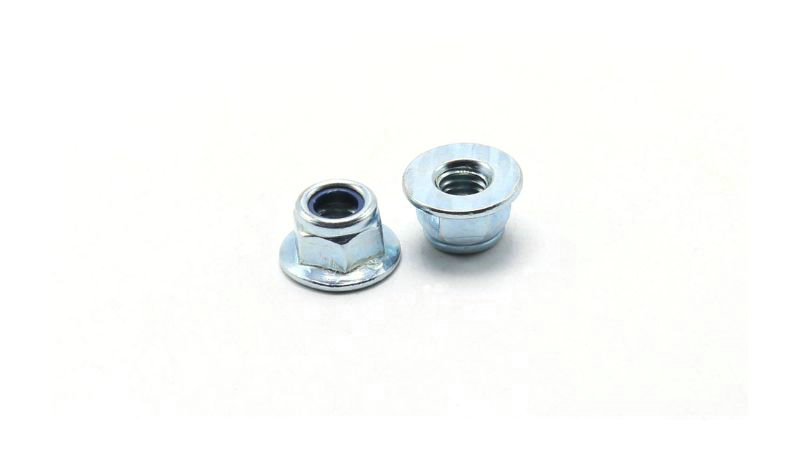
- Lock Nuts: Lock nuts are designed to resist loosening under vibrations and torque. There are several types, from nylon insert nuts to all-metal lock nuts, each offering different levels of security. Your choice in lock nuts affects the longevity of the assembly, especially in machinery prone to movement.
- Wing Nuts: For jobs where you regularly assemble and disassemble components, wing nuts are your friend. These nuts have ‘wings’ for hand-tightening, eliminating the need for tools. They aren’t meant for high-strength applications, but their convenience makes them ideal for temporary fixtures.
- Cap Nuts: Cap nuts are used when you need a smooth finish without exposed bolt threads. Their domed end, often referred to as acorn or crown nuts, makes them safe to touch and aesthetically pleasing. They’re not the strongest option, but they serve well in protecting threads and preventing contact with the end of the bolt.
- Square Nuts: Looking for more surface contact? Square nuts offer this, making them less likely to loosen under vibration than hex nuts. They are often used in furniture and other applications where a flat square side provides the needed grip area.
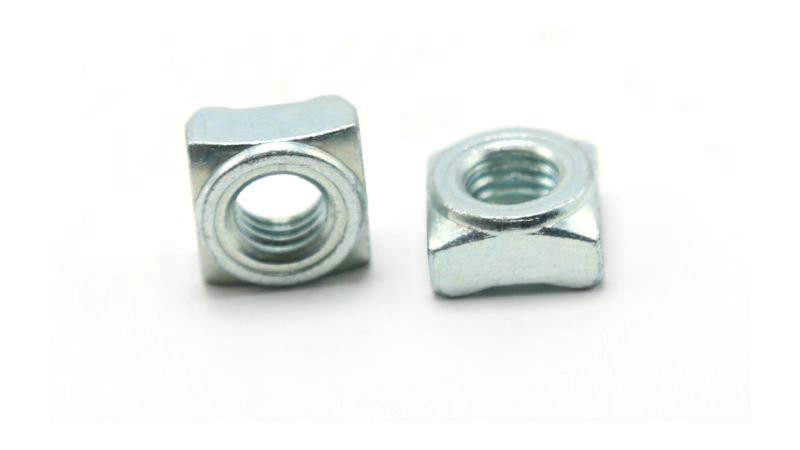
T-Nuts: T-nuts are designed to fit into wood, plastic, or composite materials, creating a strong and reliable threaded socket. They’re perfect for when you need a flush surface on one side, as the flange sinks into the material, ensuring a stable, immobile nut placement.
Flange Nuts: A flange nut is a type of fastener with a circular body, internal threads, and a flange at one end that helps distribute the load and prevents the nut from pulling through the material.
Slotted Nuts: A slotted nut, also known as castle nut, has slots cut into one end. When the nut is tightened onto a bolt, the slots align with a hole in the bolt and are locked in place by a cotter pin or wire to prevent loosening.
Cage Nuts: Cage nuts feature a square nut nested inside a spring steel clip with twin wings. Simply squeeze the wings to insert the clip nut into a square hole in wood furniture, then release to lock it securely in place.
Jam Nuts: A jam nut is a type of low-profile nut, typically about half the height of a standard nut, that is commonly used as a locking mechanism to prevent loosening due to vibration.
Coupling Nuts: A coupling nut is a long, hexagonal nut with internal threads that allows two externally threaded components like rods or bolts to be coupled or joined end-to-end.
Rivet Nuts: Rivet nuts, also known as threaded inserts or blind rivet nuts, are internally threaded fasteners designed to be anchored from one side of a material. They provide strong, load-bearing threads in thin materials where only one side is accessible.
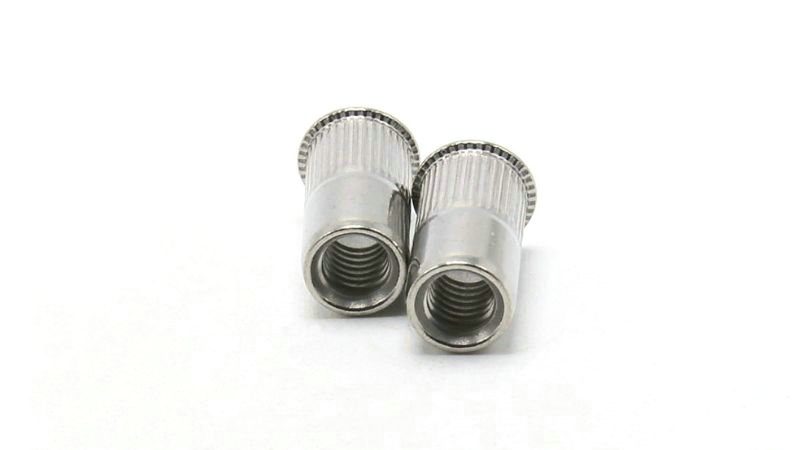
How Can I Tell the Difference Between Bolts and Nuts With Similar Appearances?
Here is a summary table comparing the key differences between bolts and nuts:
| Feature | Bolts | Nuts |
|---|---|---|
| Threads | External threads on the shaft | Internal threads inside the hole |
| Shank | Partially unthreaded shank below the head for more shear strength | Threaded all the way through |
| Head/Body | Distinct head wider than the shaft, designed to be turned or tightened | Hexagonal or square body shape without a distinct head |
| Length | Various lengths to protrude through the parts being fastened together | Typically one standard thickness, tightened down the bolt |
| Installation | Inserted through a hole in the parts being joined, protrudes out the other side where a nut is threaded on and tightened | Cannot fasten parts on its own without a bolt |
| Markings | Bolt heads marked with grade/strength ratings (e.g., Grade 2, 5, 8 or Class 8.8, 10.9, 12.9) | Marked to match the grade of bolt they are designed to pair with |
How to Select a Suitable Nut for a Bolt?
Thread size and pitch must match. The bolt and nut need to have the same thread specifications, such as M8, 1/4-20, etc. The thread diameter, pitch (distance between threads), and form (metric or inch) must be identical for the nut and bolt to fit together properly.
The strength grade should be compatible. Bolts are graded from 2 to 8 or higher based on their strength. Nuts are graded from 2 to 12 or designated A, B, C. Generally, the nut grade should match or slightly exceed the bolt grade. For example, use a grade 8 nut with a grade 8 bolt.
The material should match. The nut and bolt should ideally be made of the same material, such as steel, stainless steel, brass, etc. This prevents issues like galvanic corrosion. If dissimilar materials are used, ensure their compatibility.
What is a Washer
A washer is a thin, typically disk-shaped plate with a hole in the middle that serves various purposes when used with fasteners like bolts or nuts.
Types of Washer
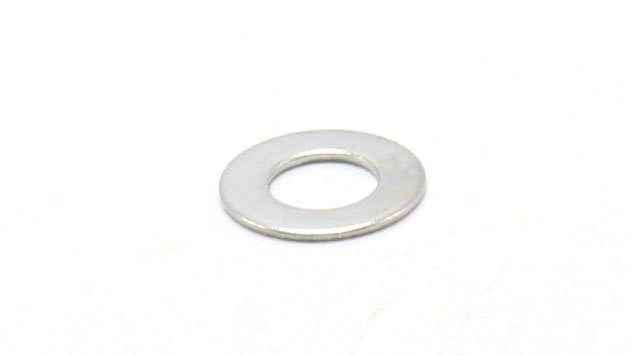
- Distribute the load of a threaded fastener over a larger area to prevent surface damage
- Provide spacing or fill oversized holes
- Act as a smooth bearing surface
- Common types include USS flat washers, SAE flat washers, and fender washers (larger diameter)
- Spring washers:
- Prevent fasteners from loosening due to vibrations
- Maintain tension in an assembly
- Provide a spring force between the fastener head and the application surface
- Common types include split lock washers, Belleville washers, wave washers, and curved washers
- Lock washers:
- Prevent rotation and loosening of fasteners
- Dig into the surface to resist rotational movement
- Common types include internal toothlock washers, external toothlock washers, and combination internal/external toothlock washers
Frequently Asked Questions
Can you explain how to identify various bolts and nuts properly?
To identify bolts and nuts, start by looking at their shapes. Bolts like hex, carriage, and lag have distinct head shapes. Nuts can be identified similarly, with hex nuts being six-sided and wing nuts having ‘wings’ for hand tightening.
What classifications are there for nuts and bolts in hardware?
Nuts and bolts are classified by their size, thread pitch, the material they are made from, and the shape of their heads. Common classes include metric and imperial sizes, and materials range from stainless steel to zinc-plated for corrosion resistance.
Which bolts are known for not loosening easily over time?
Locking bolts and nuts, such as nylon insert lock nuts and lock washers, are designed to resist loosening over time. These are often used in machinery and applications where vibration is frequent.
